Guide to Success: How To Breed Cannabis Effectively
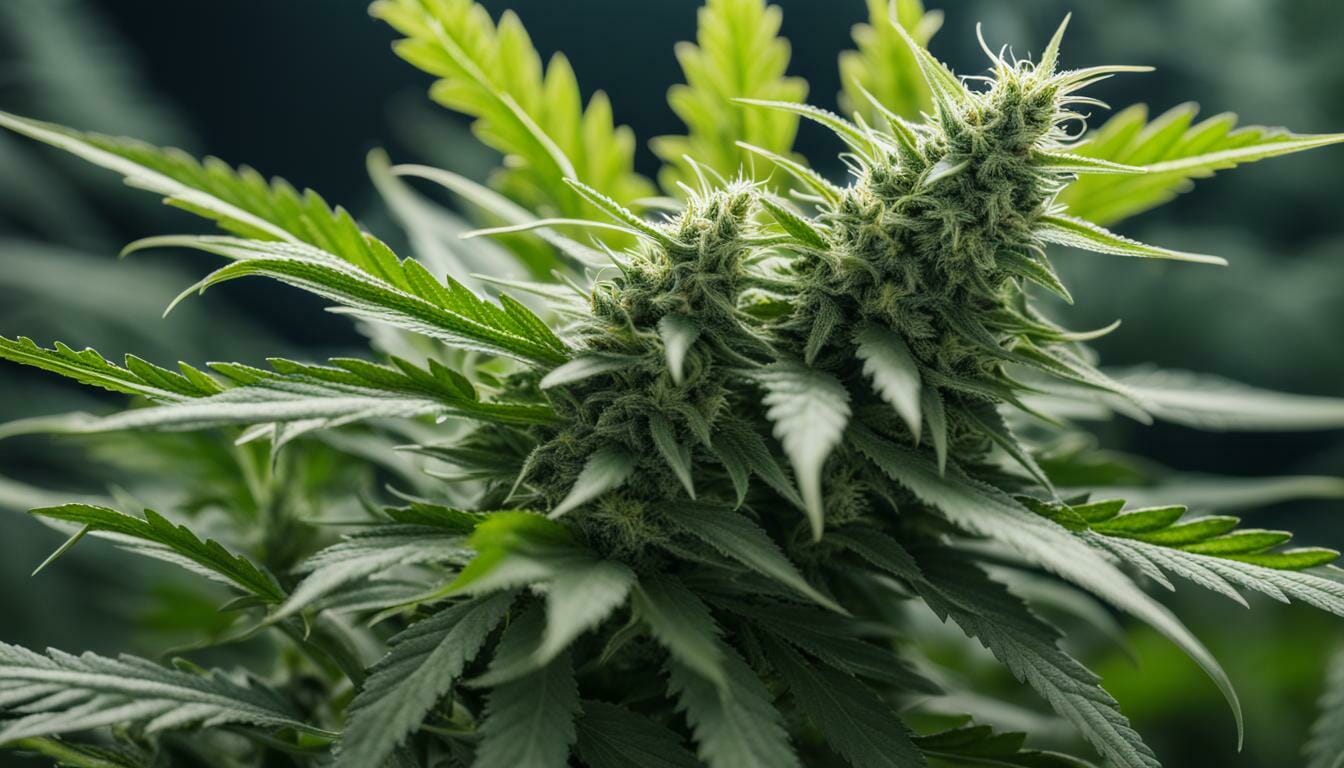
Breeding cannabis can be a rewarding but challenging endeavor, requiring a deep understanding of genetics, cultivation techniques, and plant biology. However, by learning how to breed cannabis effectively, you can develop your own custom strains that meet your specific needs and preferences.
In this guide, we will cover everything you need to know about breeding top-quality cannabis, from selecting the right strains to propagation methods, breeding techniques, and genetic maintenance. We will also provide tips on how to track and document your breeding progress and cultivate and test your newly bred strains.
Whether you are a seasoned breeder or a beginner, you will find valuable insights and practical advice in this guide to improve your cannabis breeding skills.
Key Takeaways:
- Breeding cannabis is a complex process that requires a deep understanding of genetics and cultivation techniques.
- Developing your own custom cannabis strains can offer numerous benefits, such as unique flavors, aromas, and effects.
- In this guide, we will cover different topics such as selecting the right strains, breeding techniques, genetic maintenance, propagation methods, and more.
- Effective record-keeping is crucial for tracking breeding progress and evaluating the quality of newly bred strains.
- Cultivating and testing your newly bred strains can help you determine their potency, quality, and overall characteristics.
Understanding Cannabis Genetics
Before diving into the world of cannabis breeding, it’s important to have a basic understanding of cannabis genetics. Like any other living organism, cannabis has genetic traits that determine its physical and chemical characteristics.
Cannabis genetics can be complex, with each strain having a unique combination of genes that contribute to its overall traits, such as flavor, aroma, potency, and growth characteristics. These traits are inherited from the plant’s parent strains and can be influenced by various environmental factors as well.
The Importance of Cannabis Genetics
Understanding cannabis genetics is crucial for successful breeding. It allows breeders to identify and manipulate specific genes, resulting in offspring that possess desired traits. This can be especially important for medical cannabis strains that are bred for specific therapeutic effects.
Breeders must also consider the stability of the genetic traits, as unstable genetics can lead to unpredictable offspring with inconsistent traits. By understanding the genetics of a strain, breeders can ensure a higher degree of stability in their breeding programs.
Genetic Traits in Cannabis
There are several genetic traits in cannabis that breeders must consider, including:
- Flavor and aroma: These are determined by terpenes and flavonoids, which are influenced by genetics and environmental factors.
- Potency: The potency of a strain is largely determined by the levels of THC and CBD, which are influenced by genetics and environmental factors.
- Growth characteristics: These include plant height, structure, and yield, which are largely determined by genetics.
- Therapeutic effects: These are different for each strain and are determined by the levels of cannabinoids and terpenes.
By understanding these genetic traits, breeders can select parent strains that have the desired characteristics for their breeding program.

“Understanding cannabis genetics is crucial for successful breeding. It allows breeders to identify and manipulate specific genes, resulting in offspring that possess desired traits.”
Overall, a solid understanding of cannabis genetics is essential for successful breeding. By understanding the different genetic traits and how they contribute to the overall characteristics of a strain, breeders can select the right strains, identify desired traits, and develop stable and high-quality cannabis varieties.
Selecting the Right Cannabis Strains for Breeding
Choosing the right cannabis strains is crucial for successful breeding. Not all strains are suitable for breeding, and selecting the wrong ones can lead to undesirable outcomes. Here are some tips to help you choose the best strains for your breeding program:
Consider Desired Traits
Before selecting a strain, think about the specific traits you want to achieve in your offspring. Do you want high THC content or a specific flavor profile? Looking for a hybrid with a balanced effect?
Make a list of the characteristics you want to see in your new strain. This will help you narrow down your options and select strains with the desired genetics.
Look for Genetic Stability
Stable genetics are essential for successful breeding. When selecting strains, look for those with consistent traits and stable genetics. Check for signs of hermaphroditism or other genetic abnormalities that could affect the quality of the offspring.
Consider Overall Health
Healthy plants are better suited for breeding. Look for strains that are disease-resistant and have strong growth characteristics. Avoid plants with nutrient deficiencies or signs of poor health.
By following these tips, you can select cannabis strains that will give you the best chance of success in breeding. With careful selection, you can create new and unique strains that meet your specific needs.

Cannabis Breeding Techniques
When it comes to cannabis breeding, there are several techniques that breeders use to achieve their desired results. Each technique has its own advantages and disadvantages, and the choice of technique will depend on the breeder’s goals and the specific strains involved.
Backcrossing
Backcrossing involves crossing a hybrid strain with one of its parent strains. The goal is to create offspring that are genetically similar to the hybrid but have improved traits from the parent strain. This technique is often used to stabilize desirable traits in a strain or to create strains with a specific flavor or aroma.
Backcrossing is a relatively simple technique and is widely used by both amateur and professional breeders. However, it can take several generations of backcrossing to achieve the desired results, and there is always the risk of inadvertently introducing unwanted traits from the parent strain.
Inbreeding
Inbreeding involves crossing closely related plants, such as siblings or cousins. The goal is to create offspring that are genetically uniform and have predictable traits. Inbreeding is often used to stabilize traits such as potency or yield, and is particularly useful when working with recessive traits.
However, inbreeding can also lead to a reduction in genetic diversity and can increase the risk of genetic abnormalities. It is important for breeders to monitor the health and stability of inbred strains and to use this technique judiciously.
Hybridization
Hybridization involves crossing two or more different strains to create a new hybrid strain. The goal is to combine the desirable traits of each parent strain, resulting in offspring with unique characteristics. Hybridization can also help to increase genetic diversity and reduce the risk of genetic abnormalities.
Hybridization can be a complex and time-consuming process, and breeders need to carefully choose the strains they want to cross and monitor the resulting offspring for desirable traits. However, hybridization can also be highly rewarding, as it can lead to the creation of new and exciting cannabis varieties.
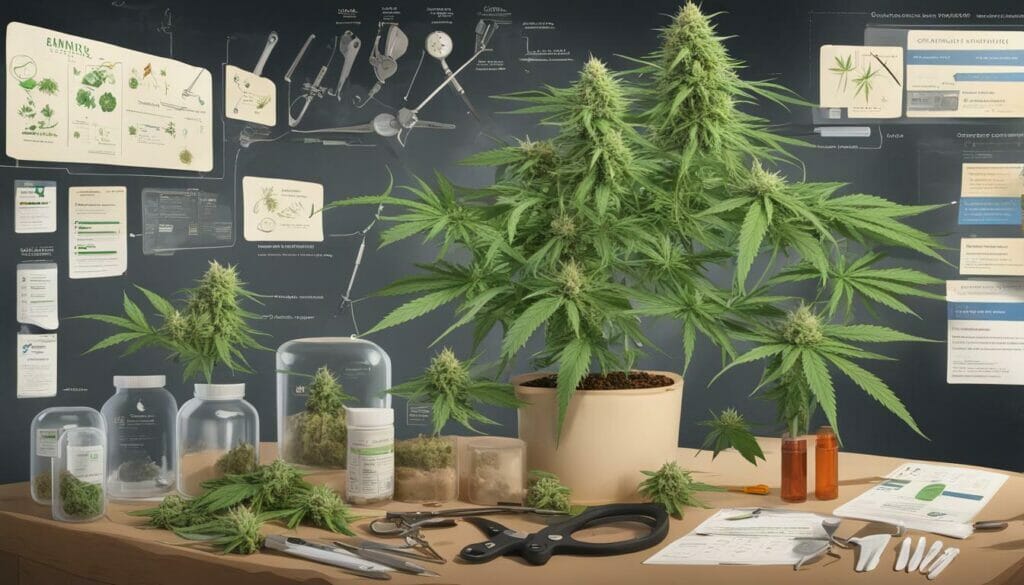
“Each breeding technique has its own advantages and disadvantages, and the choice of technique will depend on the breeder’s goals and the specific strains involved.”
Controlled Pollination for Cannabis Breeding
In cannabis breeding, controlled pollination is a crucial technique used to produce offspring with desired traits. Unlike natural pollination, where the pollen is carried by the wind or insects, controlled pollination involves manually transferring pollen from the male plant to the female plant.
Using controlled pollination ensures that only the best genetics are passed down to the offspring, resulting in higher-quality strains. Additionally, it helps maintain genetic stability by preventing unwanted pollination from other plants.
Step-by-Step Guide To Controlled Pollination
Here are the steps to follow for successful controlled pollination:
| Step | Description |
|---|---|
| 1 | Identify the male and female plants to be used for breeding. |
| 2 | Isolate the female plant from other plants to prevent cross-pollination. |
| 3 | Choose a healthy male plant and remove a mature flower or branch. |
| 4 | Remove the male flower or branch and gently shake it over the female plant to transfer the pollen. |
| 5 | Cover the female plant with a breathable material to protect it from outside pollination. |
| 6 | Repeat this process every few days until the female plant stops producing pistils, indicating that pollination was successful. |
Remember to label the plants and document the breeding process to keep track of the genetics and progress.
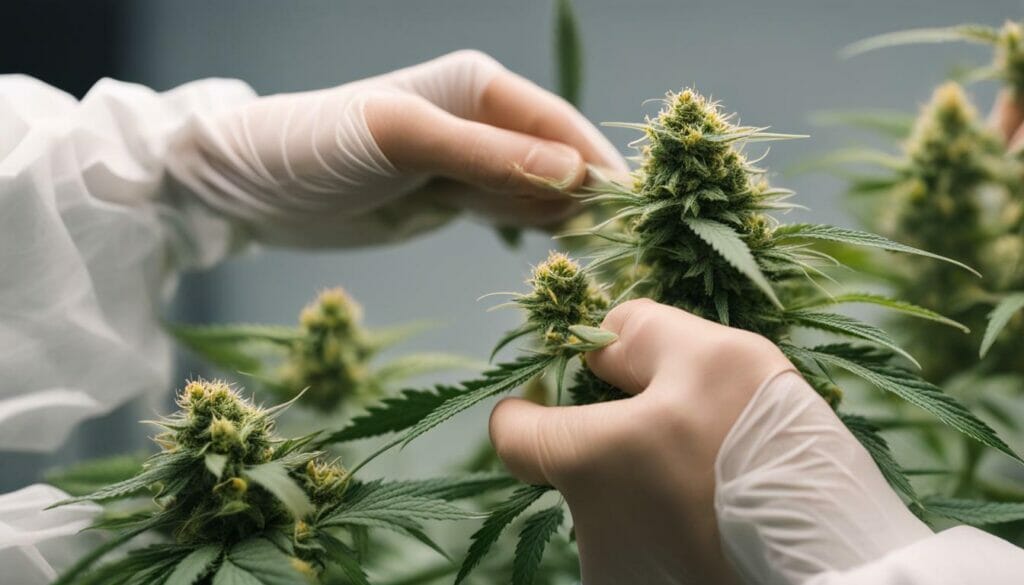
Controlled pollination is a simple yet effective technique that can greatly improve the quality and stability of your cannabis strains. With the right tools and knowledge, breeders can produce offspring with desirable traits and create unique varieties to share with the world.
Propagation Methods for Breeding Cannabis
There are several propagation methods to consider when breeding cannabis. Each method has its pros and cons, and the choice largely depends on the breeder’s goals and preferences.
Cloning
Cloning involves taking a cutting from a mature cannabis plant and rooting it in a growing medium to create a genetically identical copy. This method ensures the preservation of the desired genetic traits and characteristics, making it a popular choice among breeders.
However, cloning can also lead to the accumulation of genetic mutations and a loss of vigor over time. Therefore, it’s important to periodically refresh the genetic pool by introducing new genetics.
Tissue Culture
Tissue culture is a laboratory-based technique that involves growing cannabis cells in a sterile, nutrient-rich environment. This method allows breeders to produce large numbers of precise genetic copies of a desired strain, making it ideal for creating stable and uniform cultivars.
Tissue culture is labor-intensive and requires specialized equipment and expertise. However, it provides the most precise control over the genetic makeup of a strain.
Seed Propagation
Growing cannabis from seeds is the most natural and straightforward method of propagation. It allows breeders to introduce new genetics and maintain genetic diversity in their breeding program.
However, seed propagation can lead to genetic variability, as every seed has the potential to express different traits and characteristics. This can make it more challenging to identify and stabilize desired traits.

No matter which propagation method you choose, it’s important to maintain strict sanitation practices to avoid introducing pests and diseases into your breeding program. Also, make sure to label and track each plant to keep track of traits and characteristics throughout the breeding process.
Essential Tools and Equipment for Cannabis Breeding
When it comes to cannabis breeding, having the right tools and equipment can make all the difference. Here are some essential items you’ll need to ensure success:
| Tool/Equipment | Description |
|---|---|
| Magnifying glass | Used to examine the trichomes on the plant to determine the ideal time for harvest. |
| Plant ties and stakes | Used to provide support to the plants during growth. |
| Pruning shears | Used to prune the plant and promote healthy growth. |
| Pollination tools | Used to control the pollination process, such as paintbrushes or pipettes. |
| Growth medium | The material that the seeds are planted in, such as soil or hydroponic setup. |
| Grow lights | Used to provide the necessary light for indoor growing. |
| Humidity and temperature control equipment | Used to maintain optimal conditions for growth and prevent mold and other issues. |
It’s important to note that not all cannabis breeders will need all of these tools and equipment. Depending on the specific breeding techniques you’re using and the environment you’re working in, some items may not be necessary. But having a well-stocked toolbox will certainly increase your chances of success.
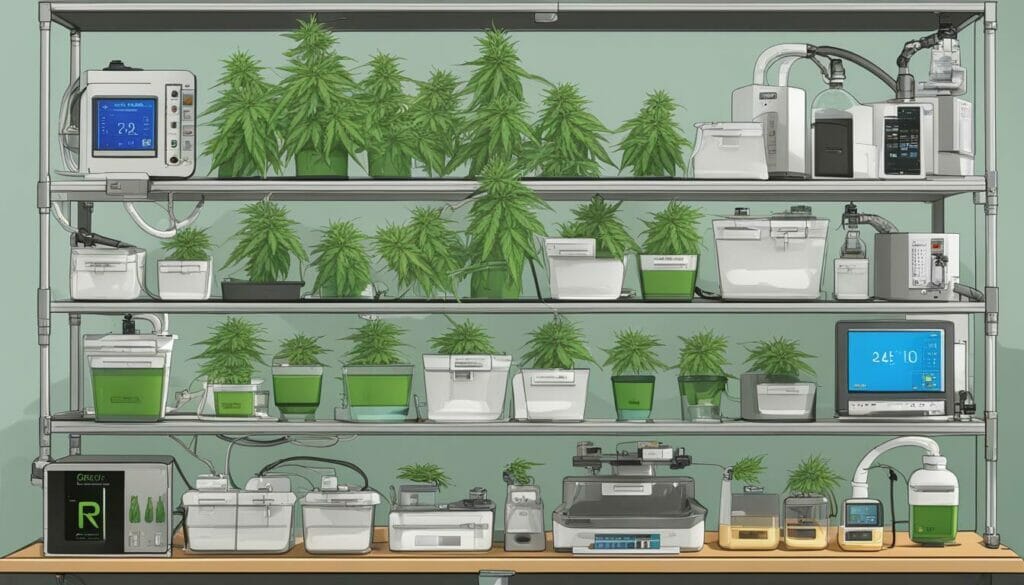
Maintaining Genetic Integrity in Cannabis Breeding
Maintaining genetic integrity is critical to successful cannabis breeding. Genetic drift, mutation, and contamination can lead to reduced quality and stability of the final product. Therefore, breeders should implement strategies to preserve the desired genetic traits and prevent unwanted changes.
Use of Parental Plants
One of the essential methods for maintaining genetic integrity is to use high-quality parental plants. Breeders should ensure that the parental plants have good health, stable genetics, and desirable traits. It is recommended to select parental plants from a reputable source and use clones instead of seeds. Since clones are genetically identical to the mother plant, they can help maintain genetic stability and ensure the consistency of the offspring.
Regular Phenotype Screening
To maintain genetic stability, breeders should regularly screen the offspring for phenotype variation. Phenotype screening involves observing the physical characteristics of the plants, such as height, leaf shape, flower structure, and smell, to ensure they are consistent with the desired traits. Breeders should discard the plants that exhibit undesirable phenotypes or genetic mutations and propagate the plants that display the desired traits.
Genetic Testing
Genetic testing is another way to maintain genetic stability and accuracy in cannabis breeding. Through genetic testing, breeders can identify and confirm the presence of specific genetic markers associated with desired traits. Genetic testing can help breeders detect genetic drift, contamination, and mutations that may occur during breeding. It is recommended to conduct genetic testing periodically to ensure the quality and stability of the strains.
Strict Sanitation Practices
Maintaining strict sanitation practices is critical to prevent contamination, which can cause genetic mutations and drift. Breeders should ensure that their work environment is clean and free of pests, diseases, and other contaminants. They should also sterilize their tools and equipment before and after each use. Breeders should avoid cross-contamination among different plants or strains and keep a record of their breeding processes to trace any issues that may arise.
By following these strategies, breeders can preserve the genetic integrity of their strains and achieve high-quality, stable, and desirable cannabis varieties.

Tracking and Documenting Cannabis Breeding Progress
Tracking and documenting your cannabis breeding progress is crucial for successful strain development. By keeping detailed records of genetic data, growth characteristics, and other relevant metrics, you can monitor the progress of your breeding program and make informed decisions to improve future outcomes. Here are some tips for effective record-keeping:
- Establish a consistent system: Decide on a system for recording and tracking data, and stick to it. This could be a spreadsheet, a notebook, or specialized software. Make sure everyone involved in the breeding program understands and follows the system.
- Record all relevant data: Keep track of the genetic traits, growth characteristics, and other factors that are important for your breeding goals. This may include information about the parents, offspring, and environmental factors.
- Use standardized nomenclature: Use clear and consistent terminology to describe genetic traits and other variables. This will help you and others understand the data and make comparisons across generations.
- Regularly review and analyze the data: Set aside time to review and analyze the data regularly. Look for patterns and trends that can help you make informed decisions about future breeding strategies.
Effective record-keeping can also help you avoid mistakes and maintain the genetic integrity of your strains. By tracking the pedigree of each plant, you can identify and eliminate any undesirable traits that may have been introduced through accidental cross-pollination or other factors.
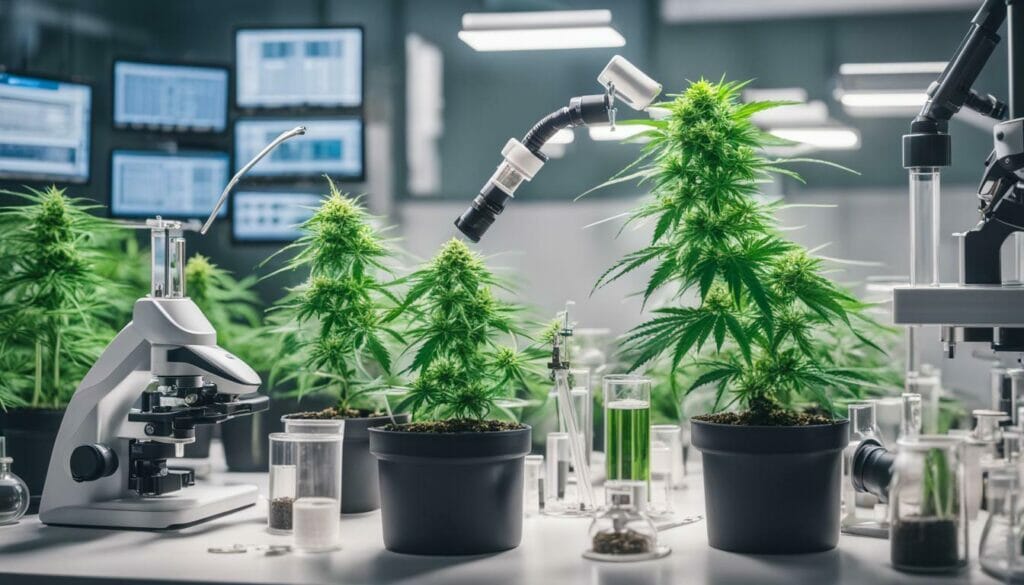
“Good record-keeping is essential for successful cannabis breeding. By staying organized and keeping detailed notes, you can make informed decisions and produce high-quality strains.”
Creating New Cannabis Varieties
One of the most exciting aspects of cannabis breeding is the potential to create new and unique varieties that have never existed before. By combining different genetic traits from different strains, breeders can develop entirely new strains that possess desirable characteristics.
The first step in creating new cannabis varieties is to select the parent strains carefully. Breeders should identify the desired traits they want in their new strain, such as high THC levels, specific flavors, or medicinal properties, and choose parent strains that possess those traits.
Next, breeders can use a variety of techniques to cross the parent strains and create offspring with different genetic traits. By selecting the best offspring from each generation and crossing them with other high-quality strains, breeders can gradually develop new varieties with increasingly desirable characteristics.
One important thing to keep in mind when creating new cannabis varieties is the need to maintain genetic stability. As the breeding process progresses and new traits are introduced, breeders must take care to ensure that the strains remain stable and consistent. This requires careful monitoring and documentation of genetic data, growth characteristics, and other relevant information.
Creating new cannabis varieties is a complex process that requires patience, skill, and a willingness to experiment. But for those who are willing to put in the effort, the rewards can be enormous. By developing new and unique cannabis varieties, breeders can make a valuable contribution to the cannabis community and create strains that truly stand out.
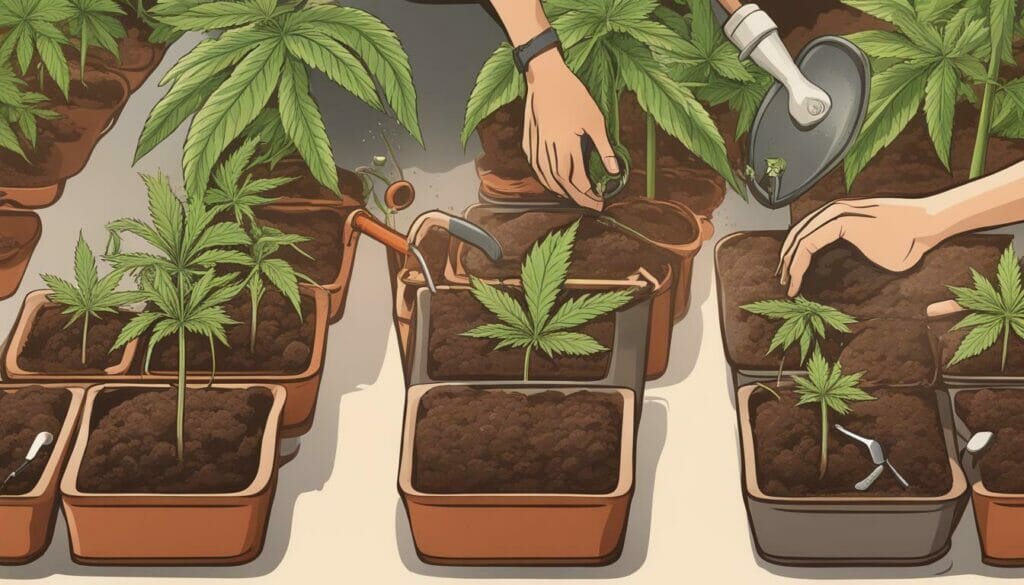
Cultivating and Testing Your Newly Bred Cannabis Strains
After successfully breeding your cannabis strains, the next step is to cultivate and test them to evaluate their quality and potency. Here are some tips to help you get started:
Germination: Start by germinating your seeds using a reliable method. You can use paper towels or a hydroponic system to sprout your seeds, but be sure to provide them with the right amount of moisture, warmth, and light to ensure successful germination.
Growth Conditions: Once your seeds have sprouted, transplant them to their permanent containers or outdoor growing space. Provide them with the right growing conditions, including the right amount of light, water, nutrients, and humidity. Monitor their growth closely and make any necessary adjustments along the way.
Evaluating Quality: As your plants grow, take note of their growth characteristics, such as plant size, leaf shape, and bud structure. Evaluate the quality and potency of the final product by testing it for cannabinoid and terpene content. You can use testing kits or send samples to a lab for objective analysis.
Harvesting and Curing: When your plants are ready, harvest them by cutting the buds and hanging them upside down to dry. Once the buds are dry, cure them by placing them in airtight containers and allowing them to age for a few weeks. This process will further enhance the flavor, aroma, and potency of your final product.
By following these steps, you can cultivate and test your newly bred cannabis strains to ensure they meet your desired quality standards. Remember to document your progress and be patient, as breeding high-quality cannabis strains takes time and practice.
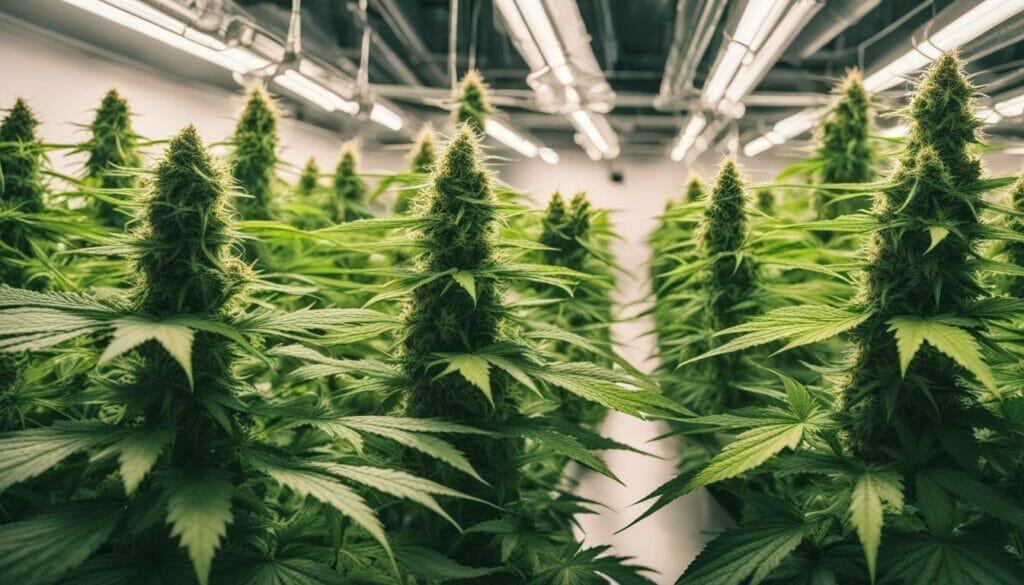
How To Breed Cannabis Effectively: Conclusion
Breeding cannabis can be a fun and rewarding experience for both casual and professional growers. By understanding the basics of cannabis genetics, selecting the right strains, and applying effective breeding techniques, you can create unique and high-quality cannabis varieties that meet your specific needs and preferences.
Remember to maintain genetic integrity throughout the breeding process, track your progress, and experiment with new ideas to keep your breeding program fresh and innovative. With the right tools and equipment, as well as careful cultivation and testing practices, you can enjoy the fruits of your labor and produce cannabis strains that stand out from the rest.
Whether you are a seasoned breeder or just getting started, always approach cannabis breeding with a sense of curiosity, creativity, and respect for the plant. By doing so, you can help shape the future of cannabis and contribute to a more diverse and sustainable cannabis culture.
FAQ
Q: What is the importance of breeding cannabis?
A: Breeding cannabis allows you to create your own unique strains with desired traits and characteristics, leading to higher quality and potency.
Q: How do cannabis genetics contribute to strain characteristics?
A: Cannabis genetics determine the specific traits, such as flavor, aroma, and potency, that a strain possesses, making it crucial to understand the genetic makeup of your plants.
Q: How do I select the right cannabis strains for breeding?
A: When selecting cannabis strains for breeding, consider factors such as desired traits, genetic stability, and overall plant health to ensure optimal results.
Q: What are some cannabis breeding techniques?
A: Cannabis breeding techniques include backcrossing, inbreeding, and hybridization, which are used to achieve specific goals in strain development.
Q: Why is controlled pollination important in cannabis breeding?
A: Controlled pollination ensures that only desired male pollen is used, resulting in stable and desirable offspring with consistent traits.
Q: What are the different propagation methods for breeding cannabis?
A: Cannabis propagation methods include cloning, tissue culture, and seed propagation, each with its own advantages and disadvantages for breeding purposes.
Q: What tools and equipment are essential for cannabis breeding?
A: Essential tools and equipment for cannabis breeding include items such as pollen brushes, pipettes, and grow tents, which help facilitate successful breeding processes.
Q: How can I maintain genetic integrity in cannabis breeding?
A: Maintaining genetic integrity involves taking steps to prevent cross-contamination and ensuring that breeding stock is carefully selected and monitored to preserve desired traits.
Q: Why is tracking and documenting breeding progress important?
A: Tracking and documenting breeding progress allows for better analysis of genetic data, growth characteristics, and other relevant information, aiding in future breeding efforts.
Q: How can I create new cannabis varieties?
A: Creating new cannabis varieties involves combining different genetic traits, experimenting with breeding techniques, and embracing creativity to develop unique strains.
Q: How do I cultivate and test newly bred cannabis strains?
A: Cultivating and testing newly bred cannabis strains involves proper germination, providing optimal growth conditions, and evaluating the quality and potency of the final product.
Suggested Articles
;)
;)
;)




 24 Jun 2025
24 Jun 2025  5 min read
5 min read


 August 25, 2023
August 25, 2023 


RESPONSES (0)
No responses yet. Be the first to respond!